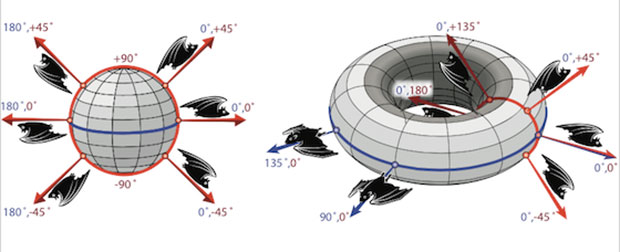Researchers have been studying how bats navigate their flight and that information may be helpful for understanding other mammals, including humans. According to an article from The Verge, the scientists placed microelectrodes in the bats to monitor brain signals. From the article:
“The resulting readings allowed the researchers to identify neurons within the bat’s brain that are tuned to specific 3D angles, sort of like a 3D vector. Moreover, the researchers realized that those neurons are located in a different region of the brain than those used to compute head directions in 2D — a finding that indicates that these two parameters are computed independently from each other.”

Finkelstein, et al. / Nature
This kind of discovery may prove to be important to neuroscience as it pertains to humans, the article notes, particularly in understanding vertigo.



